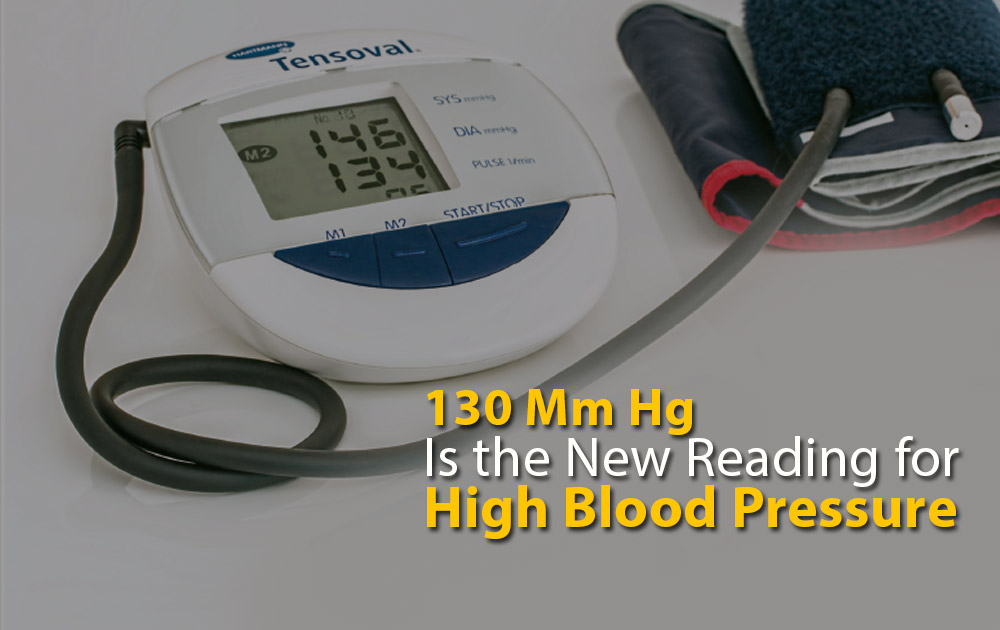According to American Heart Association/American College of Cardiology Guidelines, the high blood pressure is now defined as readings of 130 mm Hg and higher for the systolic blood pressure measurement, or readings of 80 and higher for the diastolic measurement. That is a change from the old definition of 140/90 and higher. Reflecting complications that can occur at those lower numbers. The category of pre-hypertension eliminates in the first update to comprehensive U.S. guidelines on blood pressure detection and treatment since 2003.
Also Read: Insomnia – A Short Communication Study
High blood pressure should treat earlier with lifestyle changes. And in some patients with medication – at 130/80 mm Hg rather than 140/90, according to the first comprehensive new high blood pressure guidelines in more than a decade.
The American Heart Association (AHA) and the American College of Cardiology (ACC) are publishing the guidelines for detection, prevention, management and treatment of high blood pressure. The guidelines were presented on November 13, 2017, at the Association’s 2017 Scientific Sessions conference in Anaheim, the premier global cardiovascular science meeting for the exchange of the latest advances in cardiovascular science for researchers and clinicians.
Rather than 1 in 3 U.S. adults having high blood pressure (32 percent) with the previous definition. The new guidelines will result in nearly half of the adult population (46 percent) having high blood pressure, or hypertension. However, there will only be a small increase in the number of U.S. adults. They will require anti-hypertensive medication, authors said.
These guidelines, the first update to offer comprehensive guidance to doctors on managing adults with high blood pressure since 2003, designs to help people address the potentially deadly condition much earlier.
The new guidelines stress the importance of using proper technique to measure blood pressure. Blood pressure levels should be based on an average of 2-3 readings on at least two different occasions, authors said.
High blood pressure accounts for the second largest number of preventable heart disease and stroke deaths, second only to smoking. It’s known as the “silent killer”. Because often there are no symptoms, despite its role in significantly increasing the risk for heart disease and stroke.
Paul K. Whelton, M.B., M.D., M.Sc., lead author of the guidelines published in the American Heart Association journal, Hypertension and the Journal of the American College of Cardiology, noted the dangers of blood pressure levels between 130- 139/80-89 mm Hg.
“You’ve already doubled your risk of cardiovascular complications compared to those with a normal level of blood pressure,” he said. “We want to be straight with people. If you already have a doubling of risk, you need to know about it. It doesn’t mean you need medication. But it’s a yellow light that you need to be lowering your blood pressure, mainly with non-drug approaches.”
Blood pressure categories in the new guideline are:
• Normal: Less than 120/80 mm Hg;
• Elevated: Top number (systolic) between 120-129 and the bottom number (diastolic) less than 80;
• Stage 1: Systolic between 130- 139 or diastolic between 80-89;
• Stage 2: Systolic at least 140 or diastolic at least 90 mm Hg;
• Hypertensive crisis: Top number over 180 and/or bottom number over 120, with patients needing prompt changes in medication. If there are no other indications of problems, or immediate hospitalization if there are signs of organ damage.
The new guidelines eliminate the category of pre-hypertension, which was used for blood pressures with a top number (systolic) between 120-139 mm Hg or a bottom number (diastolic) between 80-89 mm Hg. People with those readings now will be categorized as having either Elevated (120-129 and less than 80) or Stage I hypertension (130-139 or 80-89).
Previous guidelines classified 140/90 mm Hg as Stage 1 hypertension. This level is classified as Stage 2 hypertension under the new guidelines.
The impact of the new guidelines expects to be greatest among younger people. The prevalence of high blood pressure expects to triple among men under age 45. And double among women under 45 according to the report.
After blood pressure elevates, blood vessels begin damage soon, said Whelton. He is the Show Chwan professor of global public health at Tulane University School of Public Health and Tropical Medicine and School of Medicine in New Orleans. “If you’re only going to focus on events that ignore the process when it’s beginning. The risk is already going up as you get into your 40s.”
The guidelines stress the importance of home blood pressure monitoring using validated devices. And appropriate training of healthcare providers to reveal “white-coat hypertension,” which occurs when pressure elevates in a medical setting but not in everyday life. Home readings can also identify “masked hypertension,” when pressure is normal in a medical setting. But elevated at home, thus necessitating treatment with lifestyle and possibly medications.
“People with white-coat hypertension do not seem to have the same elevation in risk as someone with true sustained high blood pressure,” Whelton said. “Masked hypertension is more sinister and very important to recognize because these people seem to have a similar risk as those with sustained high blood pressure.”
Want to write for InnoHEALTH? send us your article at magazine@innovatiocuris.com


